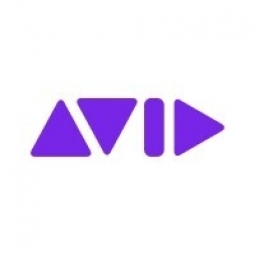Use Cases
- Smart Campus
About The Customer
Aaron Alter is a composer whose pieces have been played across the US and Europe. He maintains an online presence through various platforms, including Facebook, SoundCloud, ReverbNation, and his own website. He is also a board member of the Carlsbad Friends of the Arts in California. Despite his success in music, Aaron also has a 'real world' career as an established software and engineering consultant with his own firm. He grew up in Chicago, playing piano in jazz and rock bands, and later studied at Northwestern University and Princeton University. He has received a fellowship from the Boston Symphony's Tanglewood Festival and a grant from the New York State Council for the Arts.
The Challenge
Aaron Alter, a composer and technical consultant, faced the challenge of creating music for modern performances and recordings while maintaining his full-time career. He needed to establish a creative presence in the music industry, despite having limited time due to his demanding consulting job. The traditional method of composing music, which involved writing everything by hand, was time-consuming and inefficient. This made it difficult for him to expand his second career as a composer and produce new music regularly.
The Solution
Aaron turned to Sibelius, a music notation software, to speed up his music composition process. The software's versatile and intuitive scoring and notation tools allowed him to create scores faster, thereby expanding his creative potential. Sibelius' unique ability to 'get out of the way' and let him create was particularly beneficial. Its features, such as the ability to drag slurs, make multiple edits, create dynamic markings, and produce professional scores and sheets, were critical to making changes quickly. This enabled Aaron to get his music in front of players more quickly and tailor it with the dynamic markings and nuances that performers and directors need. The software's quickly-accessible keyboard commands and customizable layout capabilities also contributed to speeding up the composition process.
Operational Impact
Quantitative Benefit

Case Study missing?
Start adding your own!
Register with your work email and create a new case study profile for your business.
Related Case Studies.

Case Study
IoT platform Enables Safety Solutions for U.S. School Districts
Designed to alert drivers when schoolchildren are present, especially in low-visibility conditions, school-zone flasher signals are typically updated manually at each school. The switching is based on the school calendar and manually changed when an unexpected early dismissal occurs, as in the case of a weather-event altering the normal schedule. The process to reprogram the flashers requires a significant effort by school district personnel to implement due to the large number of warning flashers installed across an entire school district.

Case Study
The Luxury Residential Solution for Jade Ocean
Jade Ocean is a resort-style high-rise rental property in southern Florida - a 50-story glass tower overlooking the Atlantic Ocean. The property’s management wanted an app that would function as a customer relationship management (CRM) platform for the property and a seamless communication tool for residents and staff.

Case Study
A SMART SOLUTION FOR A CIRCULAR ECONOMY
A detailed study conducted by a student from Universidad Pontificia Comillas ICAI in Spain highlighted the need for ecologically safe and sustainable products. While recycling plays an important role in the circular economy, many consumers don’t recycle for a variety of reasons, including lack of space, inconveniently located recycling centers and collection containers, or distrust and/or disbelief in the recycling process. Organizations needed a model that made recycling easier and more accessible for everyone.

Case Study
Centralized Access Control Solution for Missouri University of Science & Technology
Missouri University of Science & Technology (Missouri S&T) faced a significant challenge in managing security across its sprawling campus. As the university expanded, the demand for new facilities and updated buildings necessitated additional security solutions. The university was using multiple platforms to control access to various buildings, along with a physical lock-and-key system, which posed a problem with oversight and management. With 35 buildings and numerous residence halls to manage, Missouri S&T sought to automate various systems through a centralized access control platform. The university staff wanted the ability to incorporate data into its human resources, student management, course enrollment, and event management system. They needed a system that allowed access and excluded access based on access need and security.

Case Study
Hyundai AutoEver's Transformation into a Mobility Software Provider with VMware Tanzu
Hyundai AutoEver, a key player in supporting Hyundai Motor Group’s IT initiatives, faced challenges in developing the connected car of the future. With over four million Hyundai vehicles connected to the cloud, a number expected to increase annually, the company aimed to provide personalized digital experiences for drivers. However, to achieve this, Hyundai AutoEver had to modernize their applications and technology. A prime example of this was their Bluelink® mobile app, a luxurious, connected car service offering various features such as remote start, door lock and unlock, on-demand diagnostics and alerts, destination search, and remote car finder.

Case Study
Oracle University Streamlines Operations with Autonomous Database
Oracle University, a platform that provides proficiency training on Oracle Cloud Infrastructure (OCI) and SaaS applications, faced significant challenges with its underlying database system. The system, which was initially based on AWS and used PostgreSQL, was migrated to OCI in 2018. However, the PostgreSQL system had several shortcomings. Performance optimization was subpar, and building a high-availability (HA) setup required substantial expertise. The system also required additional compute resources, which led to downtime and necessitated the management of the underlying block storage that PostgreSQL used. This resulted in high administrative overhead and required expertise, making the system inefficient and costly to maintain.



